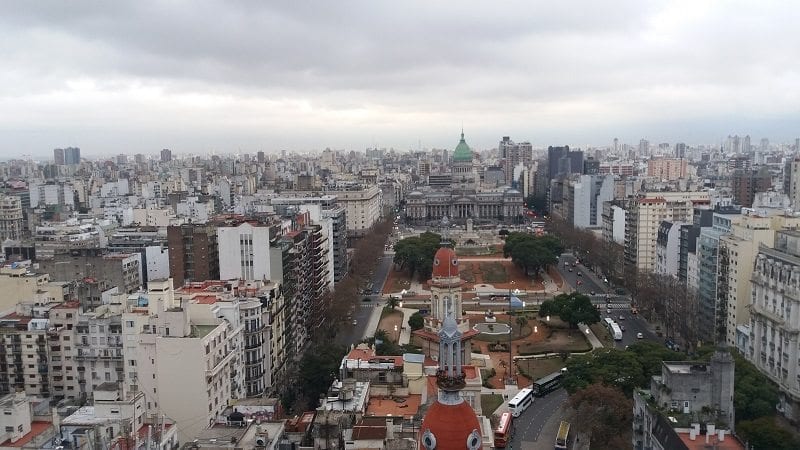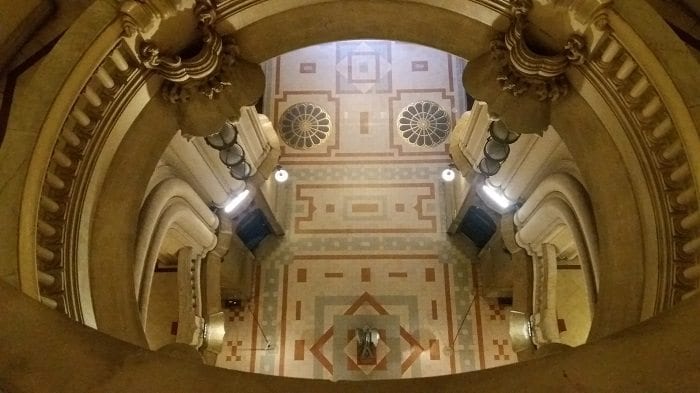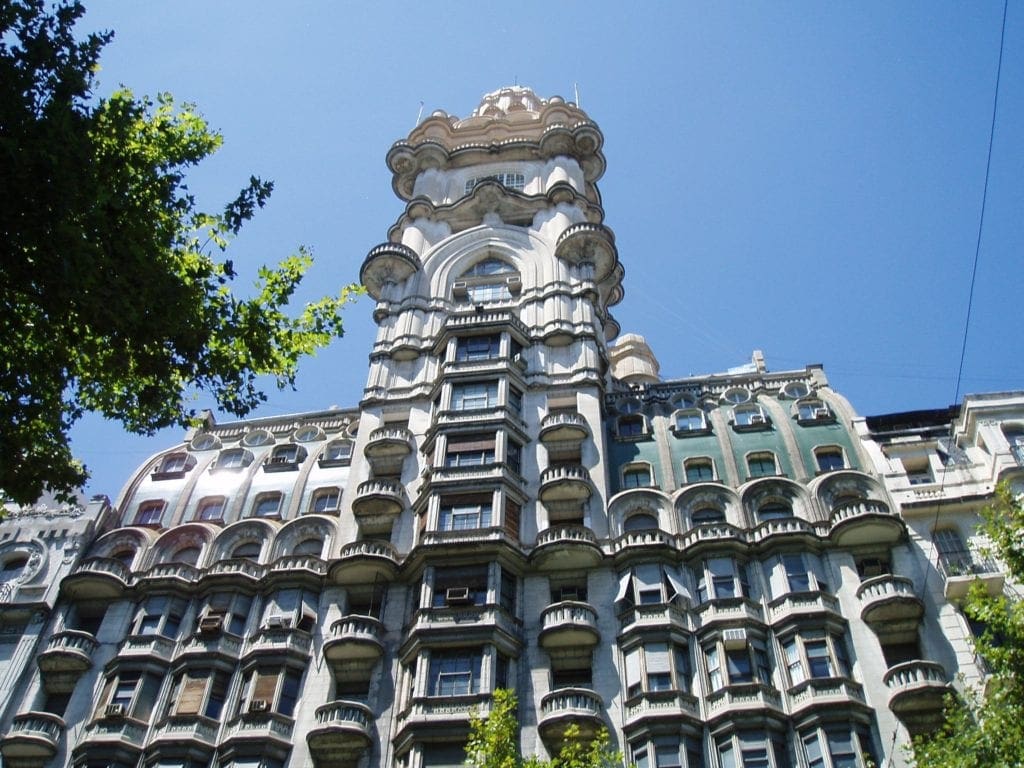Palacio Barolo Buenos Aires
Palacio Barolo is a beautiful and incredibly unique office building in the heart of Buenos Aires and one of the only ways to see the city from above. The palace was designated a National Historic Monument in 1997, its fascinating concept making it not only historically significant but a joy to see. Luis Barolo, the owner, commissioned the construction of the palace with his idea of making a mausoleum for the Italian poet Dante. Barolo believed as many did at the time that Europe would be destroyed by war and he felt it crucial to relocate important relics of history to where they would be safe. The building was designed to tell the story of Dante’s most famous poem, The Divine Comedy. Countless design elements depict Hell, Purgatory and the Heavens from the poem as you ascend the palace to the 22nd floor. When completed in 1923 it stood at 100 meters tall, one meter for every canto of the Divine Comedy and was officially the tallest building in South America at the time. So tall infact that special permission was required to build it as it was almost 4 times taller than the maximum building height allowed on Av. de Mayo at the time. As fate would have it Dantes ashes were never sent to Buenos Aires and Palacio Barolo became perhaps the most beautiful yet unused mausoleum in the world.
The Architecture
Architect Mario Palanti who also was a student of the Divine Comedy set out to fill the building with references to the poem and poet. No details were overlooked from quotes in Latin to the official opening being held on the anniversary of the poet’s death. The palace is topped with a bronze dome, whose balconies were inspired by a Hindu temple dedicated to love and serves as the emblem of the union of Dante with his beloved Beatrice. The dome was originally topped with a statue of a condor (vulture) with the body of Dante elevating him to paradise. The dome also houses an incredibly powerful lighthouse that is visible across Río de la Plata in Uruguay. Even more incredible is that Palanti actually built an almost-twin for Palacio Barolo, Palacio Salvo in Montevideo, Uruguay. His idea was that the light from each would meet in the centre of the river and serve as a welcome to boats arriving into Río de la Plata. Unfortunately, despite both lighthouses being powerful enough due to the curvature of the earth the lights do not touch, it was a beautiful thought though. There are several European styles of architecture on display in this building, another attempt to preserve what was feared to be lost if Europe was destroyed by war. As a result the Palace has always caused some puzzlement with so many diverse styles on display it is impossible to pin it down to one school of design. It does however fit in perfectly in this city infamous for having a least a few beautiful examples of every major architecture style you can think of.
How to see the Palace
The only way to see the Palace is with a guided tour as the building is still used as an office space for a horde of businesses and they kind of frown upon you wandering around unsupervised. There are days tours several times a day from Monday through Saturday for $250 pesos. These tours are conducted in Spanish and English and show you some key design features honoring Dante before ascending up beautiful elevators decorated in caste iron. At the top you are treated to an incredible 360 degree view of the city, in particular a perfect view down Av. de Mayo of Congress. On the way down we stopped off at a replica of one of an offices from the 1920´s, complete with all the appropriate decorations and office equipment. On this tour you are also able to climb the tower and sit more or less inside the lighthouse. There are evening tours everyday except Tuesdays and Sundays at 8pm. These tours come with a bigger price tag, 345 peso, but include a glass of wine, a live violin or cello performance and of course the chance to experience the city lights from above. The tours have limited places so you need to make a reservation but you can pay on the day when you get there so it’s completely painless to organised. And there is even a special tour every New Year’s Eve where you can sip on wine inside the lighthouse and enjoy the fireworks of the city as the clock strikes midnight.




Argentina Blog! Learn Spanish in Argentina Vamos Spanish Academy Viamonte 1516, CABA, Argentina Aprender Ingles Espanhol Buenos Aires Clases de Español





